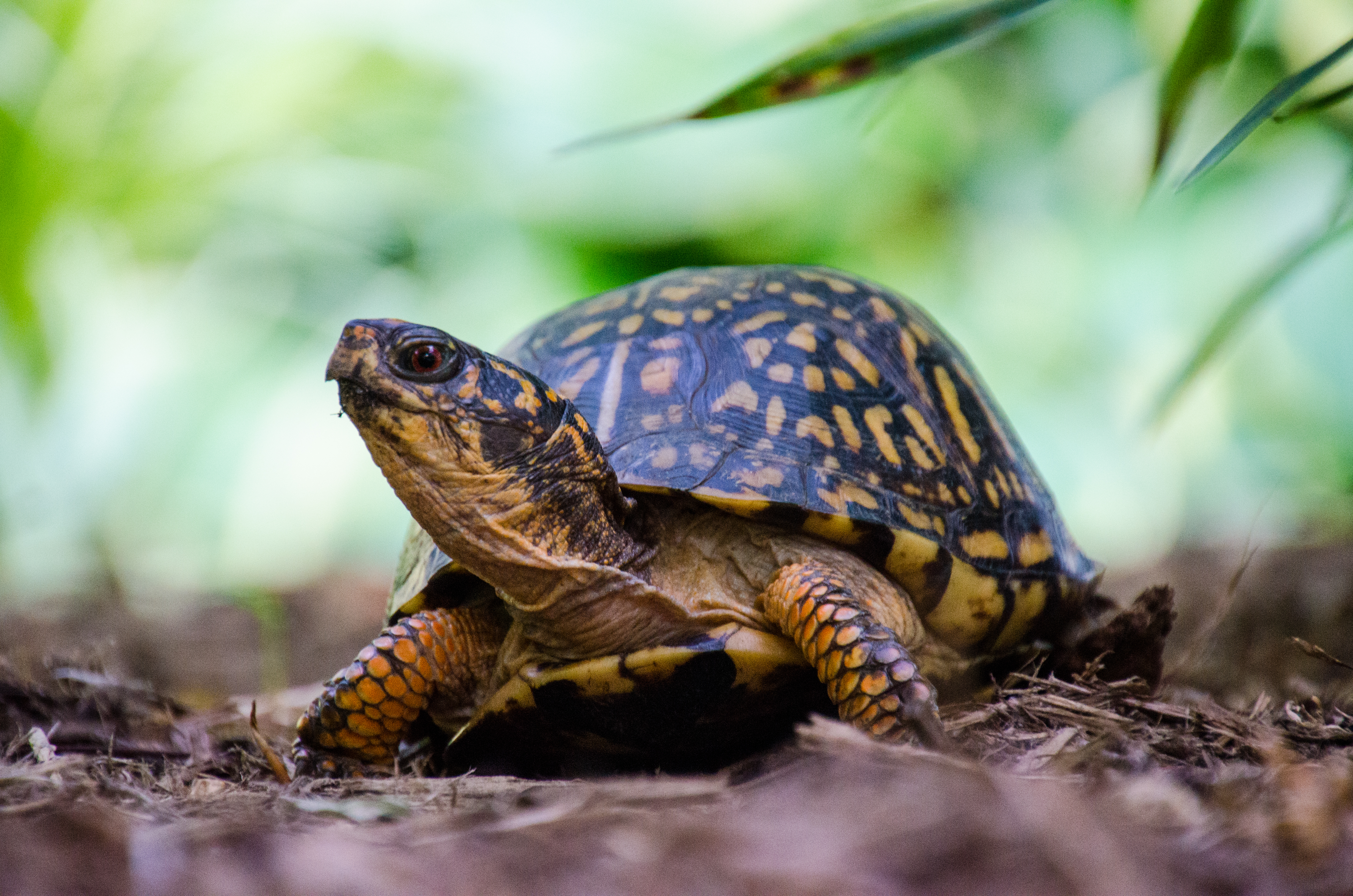Turtles are some of our oldest living creatures, having been around for nearly 200 million years. Sadly, due to a variety of factors, including the exotic pet trade, habitat destruction, and global climate change, turtle populations are rapidly declining.
Almost all of the sixteen turtle species found in Tennessee are considered vulnerable to population decline, with one of the primary causes being habitat fragmentation. As conservationists, we understand what habitat fragmentation means, but how do we explain this concept to our family and friends in a meaningful way?
Tennessee’s state reptile, the Eastern box turtle, is an excellent example of a turtle species with declined populations due to habitat fragmentation. Less than twenty years ago, these turtles were considered a common backyard animal in our state. Children at play would easily come in contact with a box turtle and, at the same time, see the familiar American robin flitting along the yard. The vast majority of today’s youth in Tennessee have never had the exciting experience of finding a box turtle in their backyard, largely due to fragmentation and the unique range of Eastern box turtles. Box turtles are considered “homebodies” with a home range of about two acres, and these two acres are where they will stay their entire life (up to 100 years in the wild!). If they are moved, they will stop at nothing to travel back to their birthplace. In the same respect, if a road, shopping center, or housing development is built within their home range, they will not seek a safer alternative. These increases in residential and commercial development, expansion of road systems, and removal of native habitat are what breaks a once expansive habitat into smaller pieces (fragments) of habitats—the loss of connectivity results in isolated patches of land. These fragmented habitats, combined with a box turtle’s specific instincts (and many being removed from the wild as pets), have led to a decline in box turtle populations throughout the Southeast.
Another turtle species facing population decline is the bog turtle—Tennessee’s smallest and most threatened turtle species. Only found in the extreme northeast corner of our state, these tiny turtles are three to three and a half inches long and prefer a specialized mountain bog habitat consisting of shallow, open, wet areas with muddy bottoms. Unlike their box turtle cousins, these turtles are considered federally threatened on the U.S. Fish and Wildlife Service’s Endangered Species List. Also, unlike their box turtle cousins, bog turtles are willing to move if their habitat is fragmented or changed. However, because they require such a specialized habitat, land development makes these areas more isolated. Fortunately for these turtles, many organizations are working to conserve mountain bog habitats throughout the Southeast.
Luckily, there are numerous ways you can help these turtles! An effective way to assist box turtles year after year is by guiding them safely across roadways. We all know box turtles are not fast creatures. Their main defense mechanism is completely closing themselves in their shells and camouflaging, a technique that does not prove effective on a busy roadway. Every year in early spring, box turtles wake up from their winter hibernations and are slower than usual. They may even have a new road built in their home range. If you happen to see one on the road trying to cross, you should safely park, gently pick up the turtle and take it to the closest green space in the direction it was going. Though it seems simple, this is the most effective way to maintain our current box turtle populations. For bog turtles, one of the best ways humans can help sustain their populations is by leaving them in the wild and reporting any poaching to the proper authorities. Unfortunately, poachers are a massive threat to all types of reptiles.
As conservationists, we know that a healthy ecosystem includes all our native flora and fauna, especially those most vulnerable to threats. Turtles and their relatives were some of the first creatures to roam our planet and together, we can ensure they continue to thrive on Earth and serve as an integral part of a well-balanced ecosystem. Learn more on how you can help turtles at home here.

